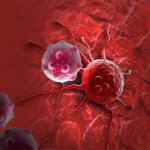The future prospects of cell
and gene therapy

Cancer
Role of Cell and Gene Therapy in Cancer
- Chimeric Antigen Receptor T-Cell (CAR-T) Therapy
- Mechanism: CAR-T therapy involves engineering a patient’s T cells to express chimeric antigen receptors that specifically recognize and bind to cancer cell antigens. Once infused back into the patient, these modified T cells can directly attack and kill cancer cells.
- Applications:
- Hematologic Malignancies: CAR-T therapy has shown remarkable success in treating B-cell malignancies such as acute lymphoblastic leukemia (ALL) and diffuse large B-cell lymphoma (DLBCL). FDA-approved CAR-T therapies like Kymriah (tisagenlecleucel) and Yescarta (axicabtagene ciloleucel) have demonstrated high remission rates in clinical trials.
- Solid Tumors: Research is ongoing to extend CAR-T therapy to solid tumors by identifying suitable tumor-specific antigens and improving T cell infiltration into solid tumor sites.
- Oncolytic Virus Therapy
- Mechanism: Oncolytic viruses are genetically engineered to selectively infect and kill cancer cells while sparing normal cells. These viruses can also stimulate an anti-tumor immune response by releasing tumor antigens as the cancer cells are lysed.
- Applications:
- Melanoma: Talimogene laherparepvec (T-VEC), an oncolytic virus derived from herpes simplex virus, is FDA-approved for the treatment of melanoma. It works by directly lysing tumor cells and stimulating an immune response against the tumor.
- Other Cancers: Clinical trials are exploring the use of oncolytic viruses for treating other types of cancer, including glioblastoma, pancreatic cancer, and colorectal cancer.
- Gene Therapy
- Mechanism: Gene therapy involves introducing genetic material into a patient’s cells to fight or prevent disease. In cancer treatment, this can include delivering genes that induce apoptosis in cancer cells, inhibit tumor growth, or enhance the immune response against cancer.
- Applications:
- p53 Gene Therapy: The tumor suppressor gene p53 is often mutated in cancers. Gene therapy can deliver a functional p53 gene to restore its tumor-suppressing activity. This approach has been tested in various cancers, including lung and head and neck cancers.
- Suicide Gene Therapy: This involves introducing genes into cancer cells that convert non-toxic prodrugs into toxic drugs, selectively killing the cancer cells. For example, herpes simplex virus thymidine kinase (HSV-TK) gene therapy in combination with the prodrug ganciclovir has shown promise in treating glioblastoma.
- Tumor-Infiltrating Lymphocytes (TIL) Therapy
- Mechanism: TIL therapy involves isolating immune cells that have infiltrated the tumor, expanding them ex vivo, and then re-infusing them into the patient. These cells can target and destroy cancer cells.
- Applications:
- Melanoma: TIL therapy has shown significant efficacy in treating metastatic melanoma, with some patients achieving long-term remission.
- Other Cancers: Research is ongoing to apply TIL therapy to other solid tumors, including cervical cancer and non-small cell lung cancer (NSCLC).
